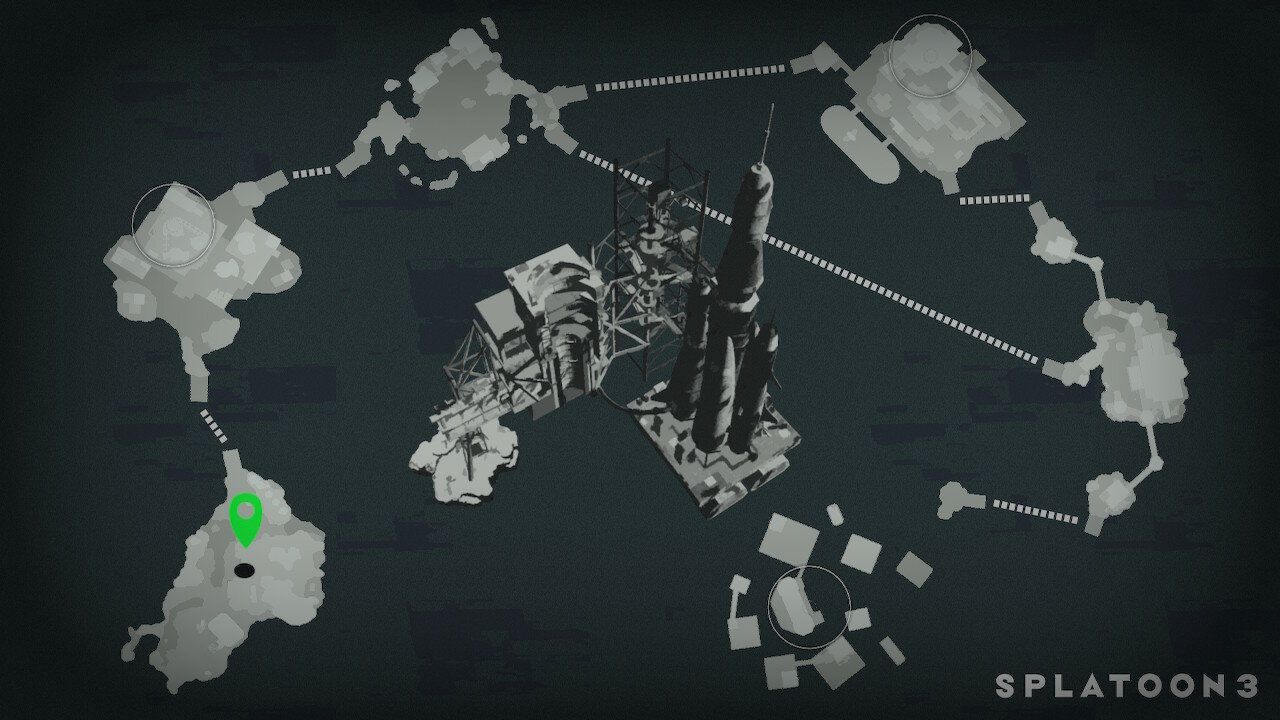
Nintendo’s paint splattered shooter has returned with it’s third entry into the colourful franchise and we here at GameHype were given the opportunity to get our inky mits on a the game for review, the code kindly provided by Nintendo.
This may be the third entry in the series but it’s my first real experience of Splatoon aside from a few rounds on Splatoon 2 when it was free to play for a weekend many moons ago, so I had very little in the way of expectations going into the latest entry.
Splatoons main focus is its multiplayer much like the previous entires, the main mode of which is Turf War in which two teams of four battle it out to cover as much of the map in their colour paint as possible. Sounds simple right? Well, It’s not, you can paint over areas already painted by the pigment flinging opposition and while attempting to do so you must also contend with the fact that you can eliminate each other with a wide variety of paint themed weapons.

However focusing on eliminations isn’t the point, while momentarily eliminating your foes provides you time to literally paint the town red, it’s not the point of the match, this was refreshing to me as playing the objective seems to come naturally to any and all Splatoon players, which isn’t the usual experience of online shooters.
The tools of the trade in Splatoon are as weird as they are wonderful, from paintball guns, huge paint rollers and ‘splatana’ swords and my personal favourite ‘The Slosher’…which is essentially a bucket. The variety of weapons impressed me, each has its own strengths and weaknesses but this was where I found my first frustration with the game.
Navigating the maps is also a lot of fun, as in you shift between your ‘combat’ and ‘squid/octo forms. Swimming is much faster than walking and traversing though enemy paint slows you down dramatically.
Tying weapons to progression in multiplayer games always irks me, theres nothing more frustrating than jumping into a game and being ‘ganked’ by a weapon over and over purely because it outclasses all that you’ve unlocked up to that point. The progression isn’t skill based, you unlock tokens as you level up that you can spend on better weapons, you level up by earning experience in matches, the better you play the more experience you get but the difference between rewards for winning and losing isn’t dramatic.
This frustration was short lived however, levelling up doesn’t take all that long and multiplayer matches are 5mins long so even if you are splattered by dual paint pistols over and over the match soon ends as does the frustration.

In fact, none of the frustration I felt with Splatoon was the games fault but rather the limitations of the Nintendo Switch itself, in an era of 4k 120fps the 1080p and 30fps restrictions the difference was noticeable. This isn’t to say the game isn’t perfectly crafted, as like all first party Nintendo titles it’s execution from a technical quality standpoint is as top class as we’ve come to expect. The switch has faced criticism over it’s hardware before and no doubt it will do so again, but it proves once and for all as far as I’m concerned, that creativity and quality beat a 4k buggy content lacking launch every single time.
Splatoons visuals are more than technical specs and as such are eye poppingly vibrant and delightful. The colours are cartoony and fun, the texture of the paint has a tactile quality that made me want to touch the screen. Characters, both players and NPCs have a thematic consistency that screams Nintendo from start to finish. Everything about the look and style of Splatoon was clearly crafted with passion, with even tiny details such as paint flicking off your characters shoes as your run through the paint bringing a smile to my face.
Overall Splatoons multiplayer is absolutely fantastic and the ink won’t have dried on this review (so to speak) before I’ll be jumping back in to fling more paint. Theres also a lot of depth hidden within the game that you’ll discover as you play, from simple things such as your team having an effective range of weapons to choose from, down to strategically fencing in a over extending foe in with your paint, thus slowing their retrat enough for your pals to eliminate them.
Splatoon doesn’t force you to only compete against other players you can work together in it’s Salom Run mode as you take down bosses with up to 3 friends. These are ace but actually rather difficult, coordination and teamwork are essential which is rather challenging given the faff involved trying to use voice chat through the Nintendo Switch App. However, this is more a failing of the Switch and holding Splatoon 3 to account for this would be unfair. Salom Run by it’s own merits is great and I hope we get more content for it in the future.

If you tire of painting with friends you can take on the games single player mode. When you first load up the game you’ll be given the task of creating your character, first you must choose between being an Inkling or a Octoling, which pretty much comes down to if we want your ‘swim’ mode to be a Squid or an Octopus. Naturally, I went Octoling, then you can decide on basic features for you androgynous avatar such as eye colour and hair. None of your choices impact gameplay but I still appreciate being able to express something of myself. Octopus tentacle Mohawk anyone? You also get to pick how your little companion creature ‘Smallfry” looks, but more about that critter later.
Having not played the first two entires I was worried I’d miss the wider narrative of the story, but I needn’t have worried. The game does a great job of introducing you to the world. You’re introduced to and recruited by an old man called Cap’n Cuttlefish who was giving me some serious Master Roshi vibes. You follow him into the sewers as he expects that the franchises usual suspects are up to no good. The Captain is mistaken, while the story isn’t exactly war and peace it’s not something I’m going to spoil here but the campaign is full of fun, vibrant characters and certainly shouldn’t be ignored.

In fact, if like me you’re new to Splatoon the start of the story acts as a very useful tutorial. Once your past the opening old Cuttlefish goes missing (following a fantastic boss fight that was everything I expect from a game that focuses on fun), you get into the games story mode properly. In what I guessed you’d call a Nintendo staple at this point the world of Alterna is broken up into several islands, you complete one to unlock the next. Each world features of selection of what are essentially challenge maps, completing the map earns you eggs. These eggs are needed to remove a furry ooze that blocks your path, each mass of ooze costs a set among of eggs to remove and it’s your critter Smallfry that does the clean up. You hurl the bouncy beast around and he helps you progress.
Small fry has few other users to, in the hub world he’ll sniff out hidden objects and collectibles. These collectibles add more lore and fluff to the story helping you uncover some history of the world. Smallfry is also useful in combat as well. Hurling the poor chap in front of enemies can often distract them long enough for you to rush in and give em a damm good lick of paint and over the course of the game I became rather fond of the little rascal.

While the story mode is a welcome bonus the main focus of the game is it’s multiplayer and quite frankly it’s fantastic and the real reason you should pick up the game. It’s been a long time since I enjoyed a multiplayer game for the joy of playing it as opposed to the drive of competition and Splatoon 3 has managed just that.







